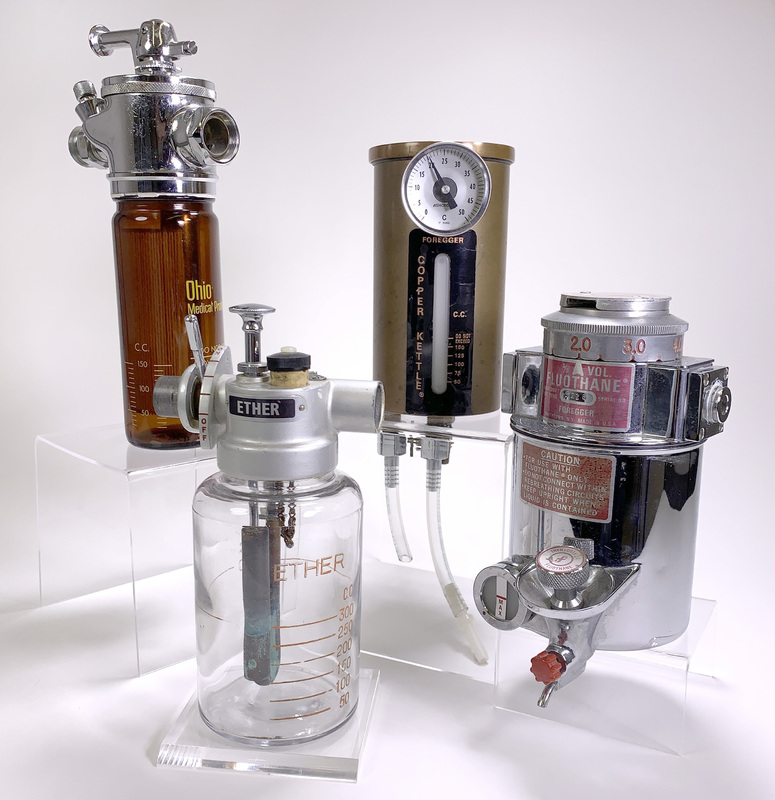Vaporizers
Vaporizers
Providing anesthesia to patients via drops of volatile anesthetics on gauze-covered masks did not allow a surgeon or anesthetist to be certain of the concentration of a drug that a patient was breathing. Moreover, everyone in the room would get exposed to traces of the anesthetic. Overdosing might lead to cardiac arrest, respiratory depression, and hypoxia. Under dosing might cause early awakening. In the first half of the 20th century, vaporizers and anesthesia machines evolved in an attempt to address these risks to patient safety. The goal: to deliver a predictable concentration of an anesthetic and maintain the required concentration throughout the operation.
“Monitoring during this period was very simple—finger on the pulse, and manual blood pressure measurement using a stethoscope and mercury sphygmomanometer. Adequate oxygenation was estimated by color of the skin and mucous membranes. Cardiac output was estimated by capillary refill (pressing on the nail bed or skin and observing how quickly the pink color returned). Depth of anesthesia was estimated by blood pressure, heart rate, patient movement, and size of the pupils.” —Sukumar Desai, MD, Brigham and Women's Hospital Department of Anesthesiology, Perioperative and Pain Medicine

